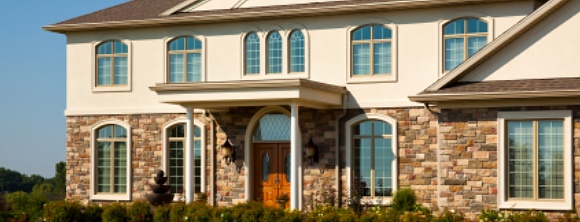Types of Windows

First you need to know what types of windows are available and what it’s called when talking to your window professional. You can find some terms you should know below:
- Double-Hung Sash Window
- Single-Hung Sash Window
- Horizontal Siding Sash Window
- Casement Window
- Awning Window
- Hopper Window
- Tilt and Slide Window
- Tilt and Turn Window
- Transom Window
- Jalousie Window
- Clerestory Window
- Skylight
- Roof Window
- Roof Lantern
- Bay Window
- Oriel Window
- Thermal Window
- Fixed Window
- Picture Window
- Multi-lit Window
- Emergency Exit/Egress Window
- Stained Glass Window
- French Window
This sash window is the traditional style of window in the United Kingdom, and many other places that were formerly colonized by the UK, with two parts (sashes) that overlap slightly and slide up and down inside the frame. The two parts are not necessarily the same size. Nowadays, most new double-hung sash windows use spring balances to support the sashes, but traditionally, counterweights held in boxes on either side of the window were used. These were and are attached to the sashes using pulleys of either braided cord or, later, purpose-made chain. Double-hung sash windows were traditionally often fitted with shutters. Sash windows may be fitted with simplex hinges which allow the window to be locked into hinges on one side, while the rope on the other side is detached, allowing the window to be opened for escape or cleaning.
One sash is movable (usually the bottom one) and the other fixed. This is the earlier form of sliding sash window, and is also cheaper.
Has two or more sashes that overlap slightly but slide horizontally within the frame. In the UK, these are sometimes called Yorkshire sash windows, presumably because of their traditional use in that county.
A window with a hinged sash that swings in or out like a door comprising either a side-hung, top-hung (also called “awning window”; see below), or occasionally bottom-hung sash or a combination of these types, sometimes with fixed panels on one or more sides of the sash. In the USA, these are usually opened using a crank, but in parts of Europe they tend to use projection friction stays and espagnolette locking. Formerly, plain hinges were used with a casement stay. Handing applies to casement windows to determine direction of swing; a casement window may be left-handed, right-handed, or double. The casement window is the dominant type now found in the UK and parts of Europe.
An awning window is a casement window that is hung horizontally, hinged on top, so that it swings outward like an awning.
A hopper window is a bottom hung casement window that opens similar to a draw bridge typically opening to the outside.
A window (more usually a door-sized window) where the sash tilts inwards at the top and then slides horizontally behind the fixed pane.
A window which can either tilt inwards at the top, or can open inwards hinged at the side. This is by far the most common type of window in Germany, its country of origin. It is also widespread in many other European countries.
A window above a door; in an exterior door the transom window is often fixed, in an interior door it can open either by hinges at top or bottom, or rotate on hinges. It provided ventilation before forced air heating and cooling. A fan-shaped transom is known as a fanlight, especially in the British Isles.
Also known as a louvered window, the jalousie window consists of parallel slats of glass or acrylic that open and close like a Venetian blind, usually using a crank or a lever. They are used extensively in tropical architecture. A jalousie door is a door with a jalousie window.
A window set in a roof structure or high in a wall, used for daylighting.
A flat or slope window used for daylighting, built into a roof structure that is out of reach.
A sloped window used for daylighting, built into a roof structure.
A roof lantern is a multi-paned glass structure, resembling a small building, built on a roof for day or moon light. Sometimes includes an additional clerestory. May also be called a cupola.
A multi-panel window, with at least three panels set at different angles to create a protrusion from the wall line.
A window with many panels. It is most often seen in Tudor-style houses and monasteries. An oriel window projects from the wall and does not extend to the ground. Oriel windows originated as a form of porch. They are often supported by brackets or corbels. Buildings in the Gothic Revival style often have oriel windows.
Thermal, or Diocletian, windows are large semicircular windows (or niches) which are usually divided into three lights (window compartments) by two vertical mullions. The central compartment is often wider than the two side lights on either side of it.
A window that cannot be opened, whose function is limited to allowing light to enter (Unlike an unfixed window, which can open and close). Clerestory windows are often fixed. Transom windows may be fixed or operable.
A very large fixed window in a wall, typically without glazing bars, or glazed with only perfunctory glazing bars near the edge of the window. Picture windows are intended to provide an unimpeded view, as if framing a picture.
A window glazed with small panes of glass separated by wooden or lead “glazing bars”, or “muntins”, arranged in a decorative “glazing pattern” often dictated by the architectural style at use. Due to the historic unavailability of large panes of glass, this was the prevailing style of window until the beginning of the 20th century, and is traditionally still used today.
A window big enough and low enough so that occupants can escape through the opening in an emergency, such as a fire. In the United States, exact specifications for emergency windows in bedrooms are given in many building codes. Vehicles, such as buses and aircraft, frequently have emergency exit windows as well.
A window composed of pieces of colored glass, transparent, translucent or opaque, frequently portraying persons or scenes. Typically the glass in these windows is separated by lead glazing bars. Stained glass windows were popular in Victorian houses and some Wrightian houses, and are especially common in churches.
A French window, also known as a French door is really a type of door, but one which has one or more panes of glass set into the whole length of the door, meaning it also functions as a window. In Italy they are very common, usually overlooking a terrace, known as portafinestra (door-window).




 Looking for pricing or additional information on our Replacement Window and/or Door Installation, Siding, Dry Rot Repair or other remodeling and construction services? Please call us right now or fill out the form.
Looking for pricing or additional information on our Replacement Window and/or Door Installation, Siding, Dry Rot Repair or other remodeling and construction services? Please call us right now or fill out the form. "We want to say Thank You so much for the windows and for the work it took to install them..."
"We want to say Thank You so much for the windows and for the work it took to install them..." 